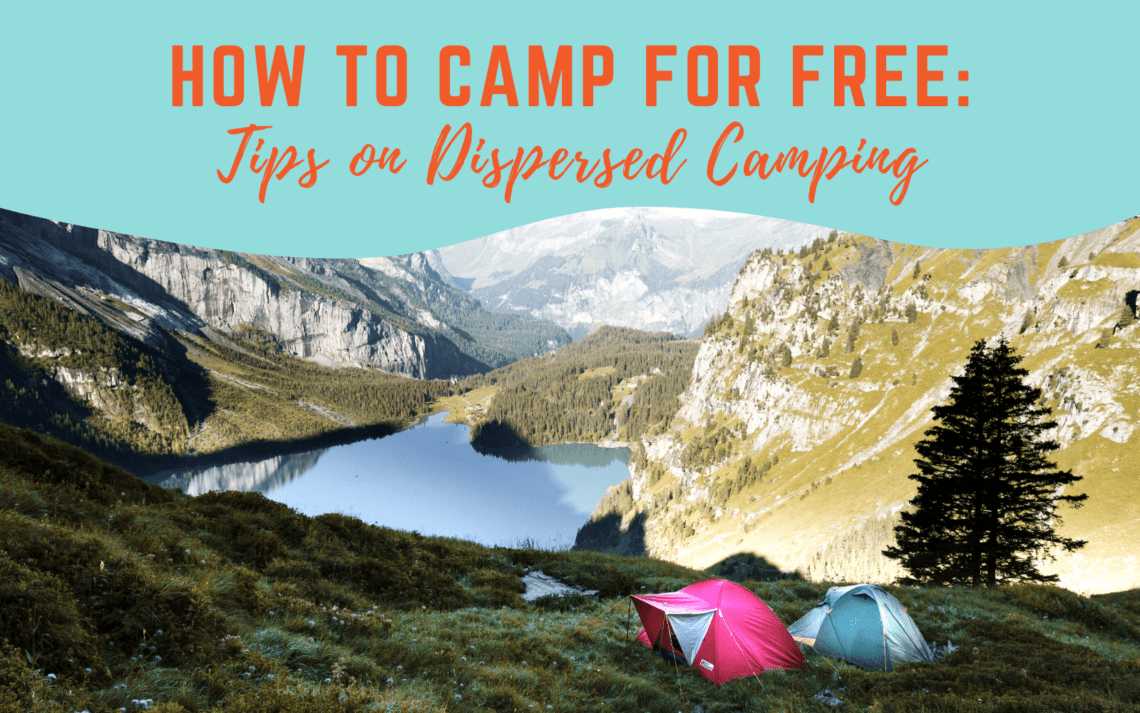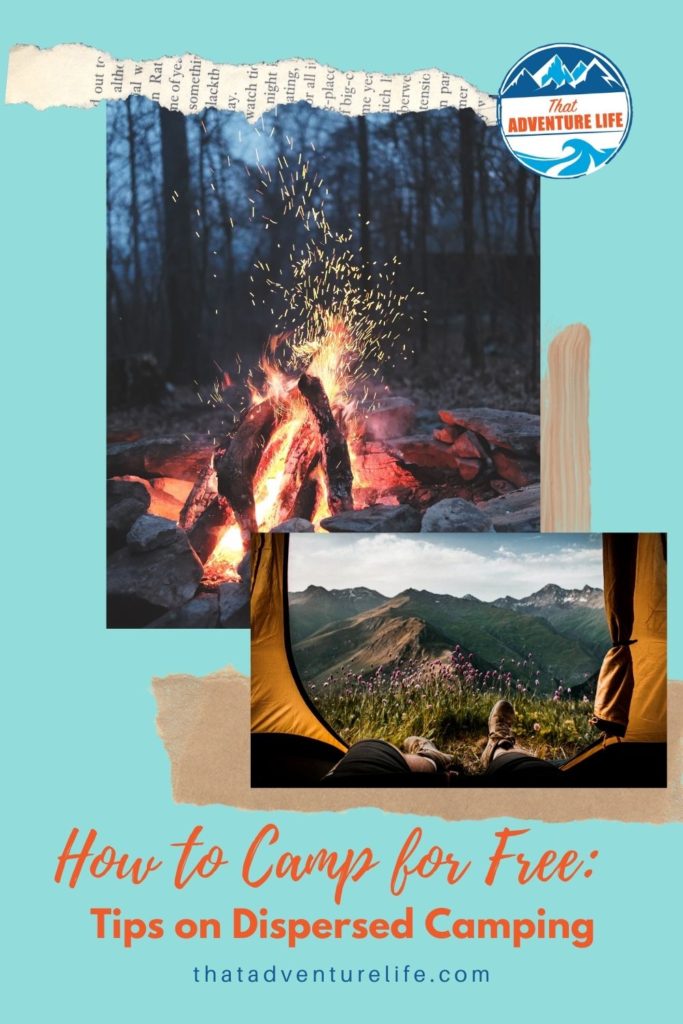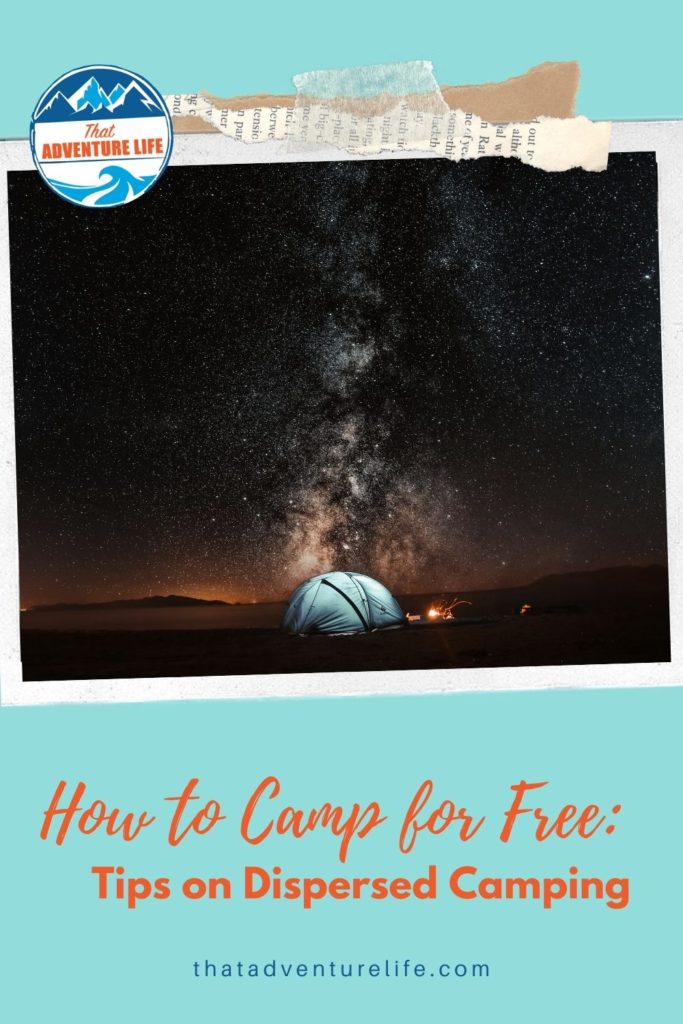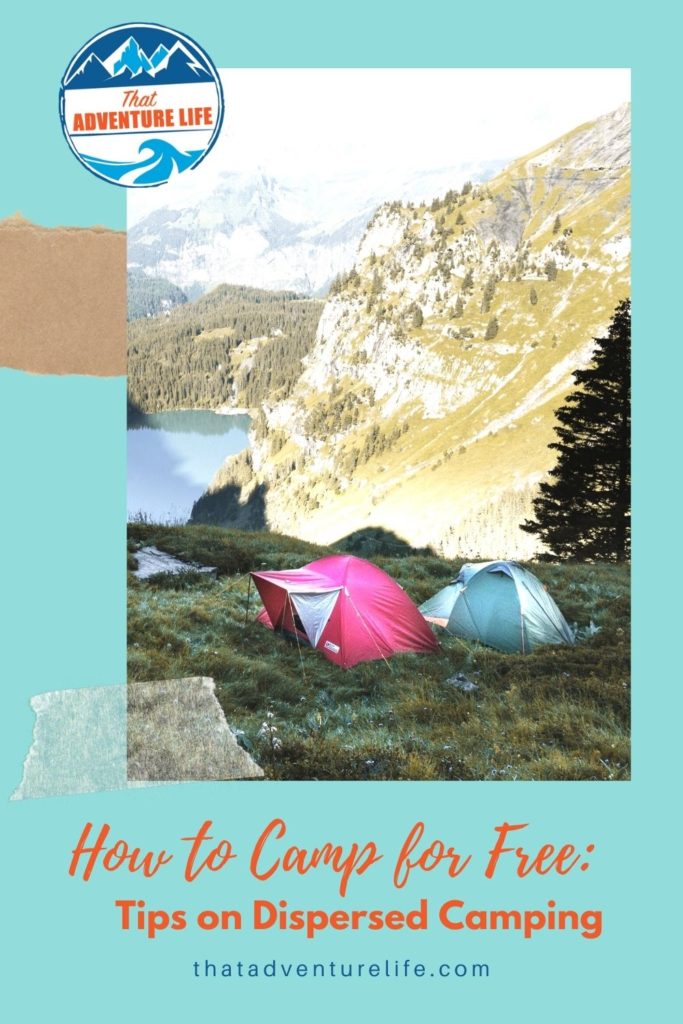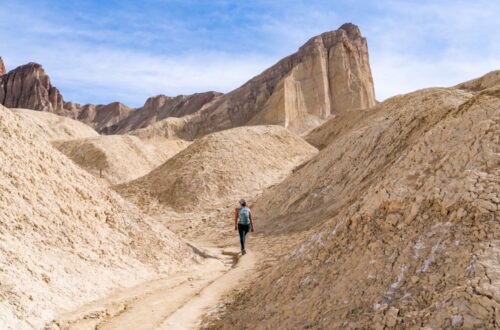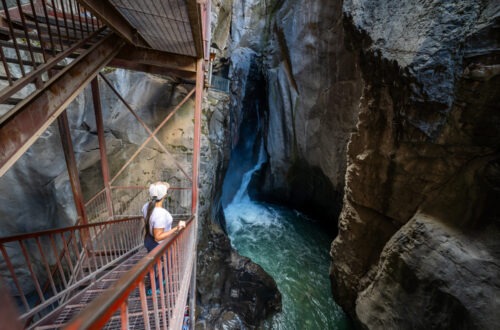With the number of trips and adventures that Dustin and I did, for some reason, we never actually tried tent camping until recently. And yes, we fell in love with it. I got especially excited when I found out that we can actually camp for free! I mean, who wouldn’t like saving a couple of hundred bucks a night on hotel rooms or Airbnbs? Free camping, in another word, dispersed camping, is not for everyone. You will definitely be “roughing it.” And it is not something we recommend for first-time campers. However, there is nothing like falling asleep to the sound of the ocean waves or waking up to sparkling morning dew in a quiet forest.
What is dispersed camping, and what are the pros and cons?
Dispersed camping is the term used for camping on public land in places outside of a designated campground unless posted otherwise. It’s usually allowed in certain locations in national forests and Bureau of Land Management (BLM). There are also free camping opportunities in some Wildlife Management Areas (WMA), state forests, and grasslands. Dispersed camping is NOT allowed in developed recreation areas such as picnic areas or trailheads.
Pros:
- IT’S FREE!!
- You can get pretty close to many beautiful undeveloped (and unspoiled) areas that you won’t be able to with hotels or Airbnb.
- No reservations are needed and there are usually plenty of available spaces. This gives you a lot of flexibility on your schedule.
- Depending on how popular the spot is, you typically won’t have neighbors.
- The campsites are often very beautiful.
- You will be surrounded by nature, not other RVs, campers like you would in busy campgrounds.
- Our favorite thing about dispersed camping is the night sky! You’ll have access to the most beautiful night sky, sometimes milky way, since there is minimal light pollution.
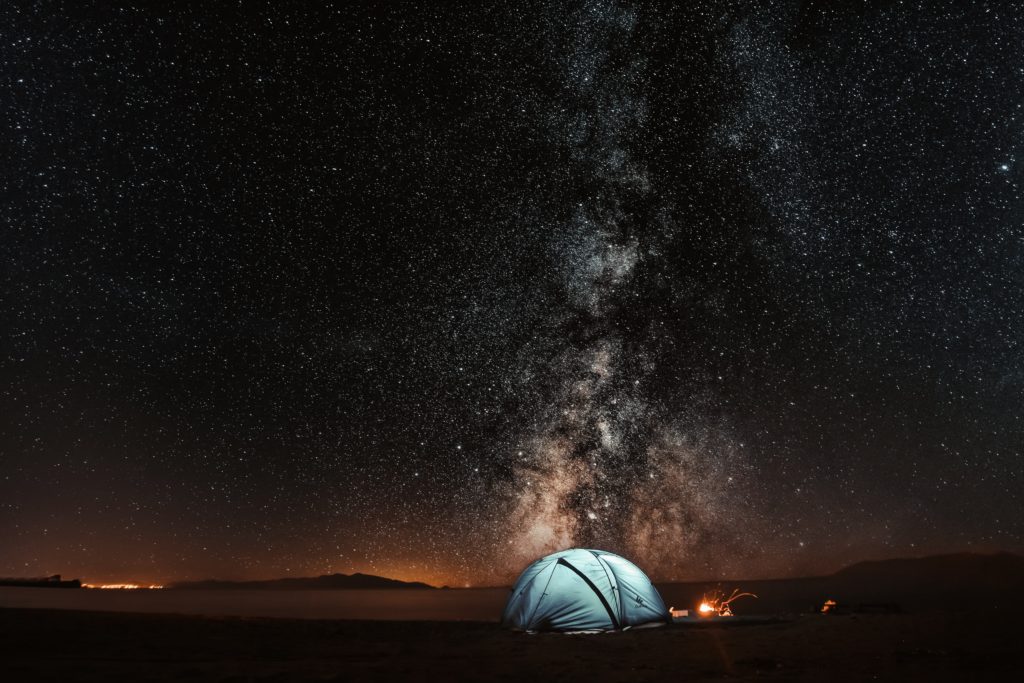
Cons:
- No amenities such as toilets, water, and more.
- You need to come fully prepared and self-contained. This means that you will need to pack out EVERYTHING that you brought in, including all trash.
- Since there are no toilets, you will have to deal with your own 💩 by burying it or packing it out with you.
- There won’t be any drinking water. You have to bring your own. If there is a spring or body of water nearby, you will need to filter it and or boil it before drinking or cooking.
- It requires more planning such as permits, road conditions, rules and regulations of the areas you’re planning to camp, etc.
- a lot of the time you will have no cell reception or wifi
Find Your Free Camp Site
There are several ways to find a free campsite. Please note that certain sensitive habitats or high-use areas are marked with “no camping” signs. Other areas such as living biological crusts of desert environments, fragile plants of high alpine areas, alpine meadows are also off-limits. Please make sure to obey all the signage and respect the land.
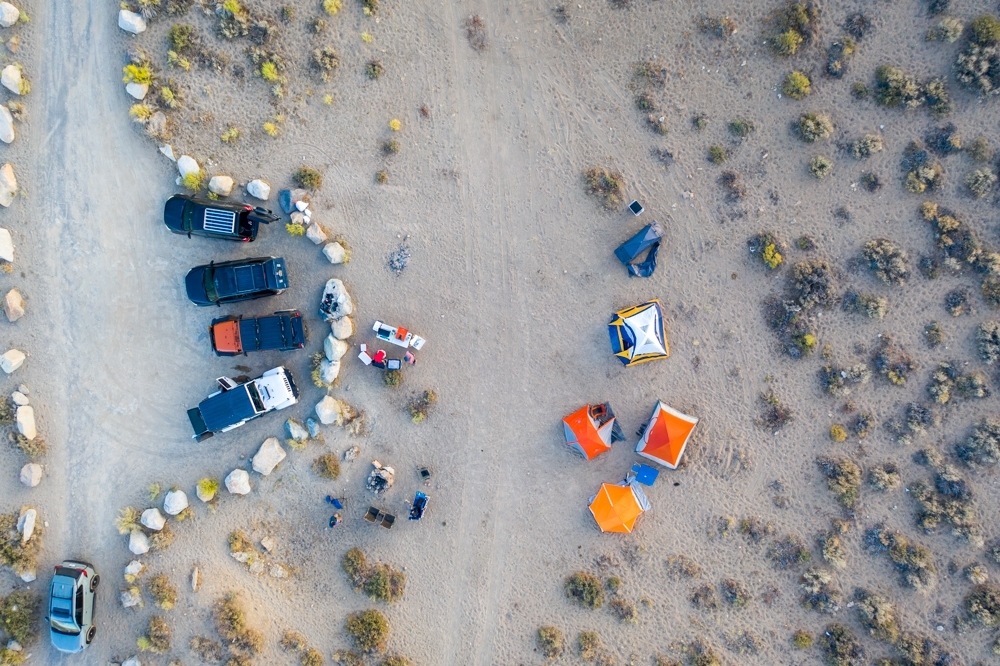
1. Check Google Maps
The green areas on Google Maps signify public lands. This will give you a rough boundary of national forests and other public areas. Google Earth mode and zoom function will give you an idea of the surrounding landscapes and roads.
2. Use paper maps
Google Maps sometimes won’t show you some of the wild areas. It also won’t work once you’ve gone off the beaten path, with no cell service. Stop by a ranger station for a local map.
3. Talk to a ranger
Call or stop by a local National Forest of BLM office. These rangers are usually happy to share tips and useful information, including rules and regulations of the areas you’re planning to camp in.
4. Check camping websites and apps
There are plenty of free websites and apps that will help you find free campsites. Some of these are:
Campendium.com: A helpful compilation of free campsites.
Freecampsites.net: Users can add campsites, reviews, and tips on free campsites across the U.S. Sites vary from noisy parking lots to pristine wilderness gems.
onX Maps: This app, designed primarily for hunting, has tons of public land information.
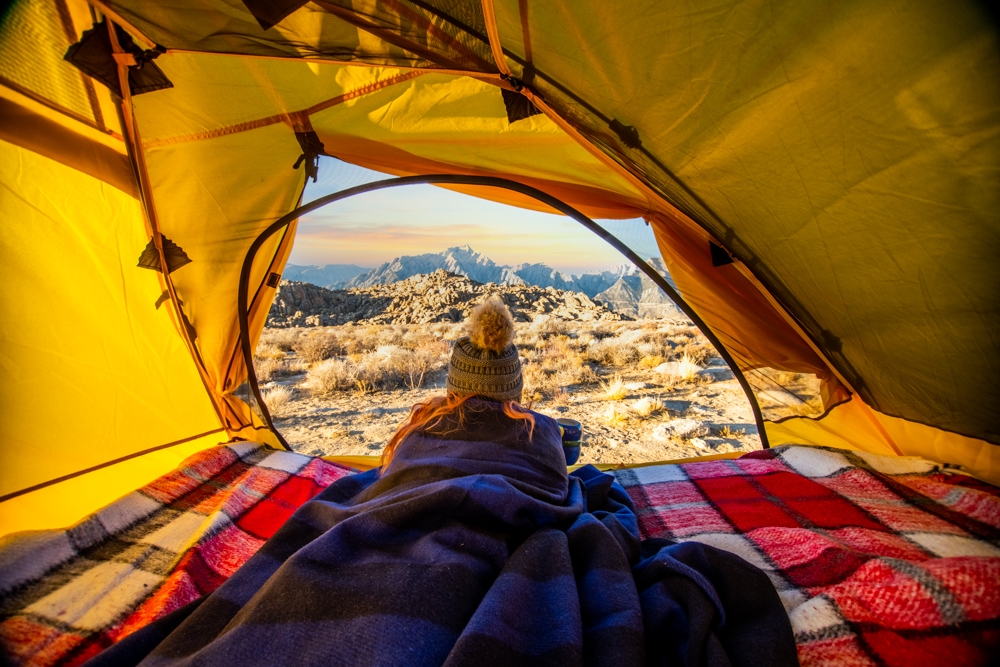
Know before you go
- Plan ahead: Do you need a fire permit or overnight camping permit? Are there seasonal restrictions? How are the road conditions? How long can you camp there? (It’s usually 14 days during any 30 days period).
- Drive and camp on established roads only. Even though dispersed camping areas don’t have designated sites, it doesn’t mean you can just invent your own campsite. You should only drive on established dirt roads and camp on bare, compacted soil areas. Never block a road or damage or kill plants or grass.
- Do NOT camp within 200ft of any water source.
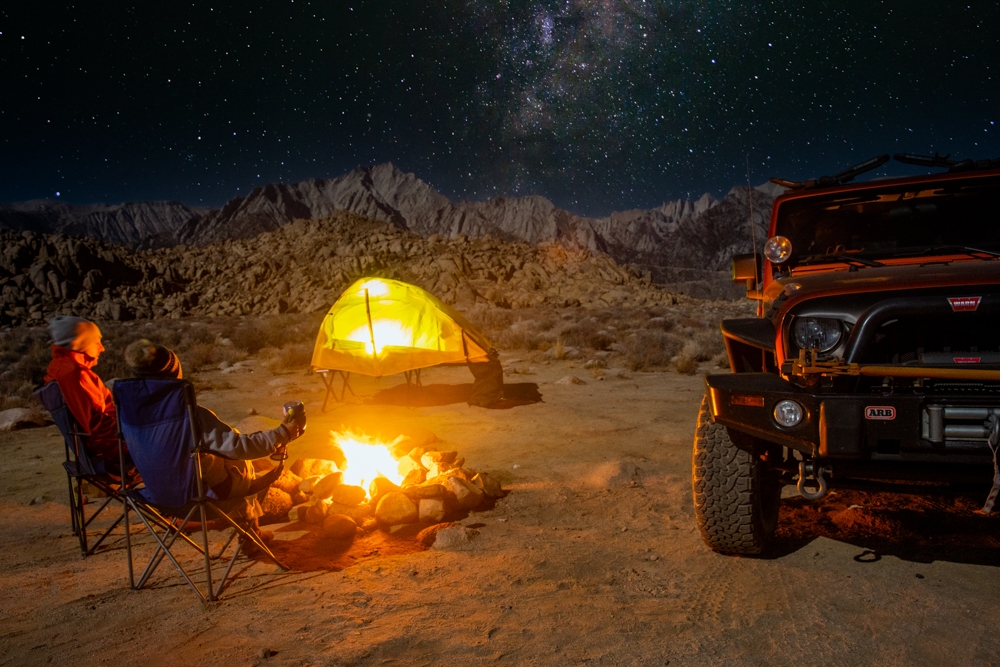
- Practice LEAVE NO TRACE. This means you need to either bury your 💩 at least 6″ deep or carry it out. You also need to carry out your used toilet paper, along with ALL of your trash. You need to leave the area as pristine as it was before. Some options for disposal include dropping your trash at a dumpster when you go into town or bringing your trash home with you to dispose of it there.
- Bring your own water and/or water filter system. With dispersed camping, you won’t have access to running water. You’ll need to pack enough water for drinking and other usages for your entire group for the duration of the trip. If you’re camping near a water source, make sure you use a filter before using that water. (Once again make sure to camp at least 200ft from water sources).
- Shower, wash dishes, or dispose of water waste AT LEAST 200 FT AWAY FROM ANY WATER SOURCE. Do not use ANY soap directly in a water source. It is best if you use biodegradable soap
- Bring proper food storage. If you’re camping in bear country, you will need to bring bear canisters to safely store your food and scented items.
- Do not camp on land that is not designated for dispersed camping. With established campgrounds, it is easy to understand where you can and cannot set up your tent. With dispersed camping, you can’t technically “camp anywhere.” You still have to follow rules for how and where you can legally set up your camp. The rules and regulations are different in different areas. So make sure to do your research before you go.

- Research and know the campfire regulations at the time of your trip. Fire regulations change throughout the season and are different for dispersed camping than established campgrounds. Check your area for the most updated regulations on whether you need a campfire permit or not. You also must have a shovel and a container of water. Only use established fire rings. Make sure to clear an area at least 5 ft wide all the way around your fire ring. DO NOT CUT OR BURN LIVE TREES.
- Dogs are usually allowed. However, they need to be under your control at all times.
If you’re not sure what to bring for your dispersed camping trip, check out the list of our favorite items to bring to make your dispersed camping trip more enjoyable. For a full list of our camping gear, you can check it out here. If you’re in the Mammoth Lakes area, they have some awesome free camping near the hot springs. You can check out a list of our favorite hot springs here.
Happy Adventuring. Don’t forget to follow us on Instagram, subscribe to our Youtube channel, and sign up for our newsletter!

